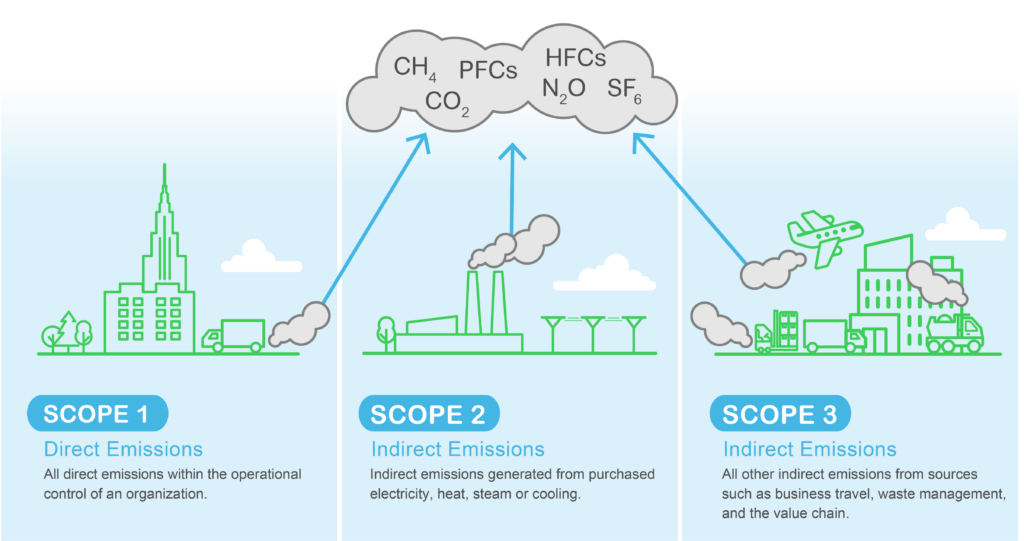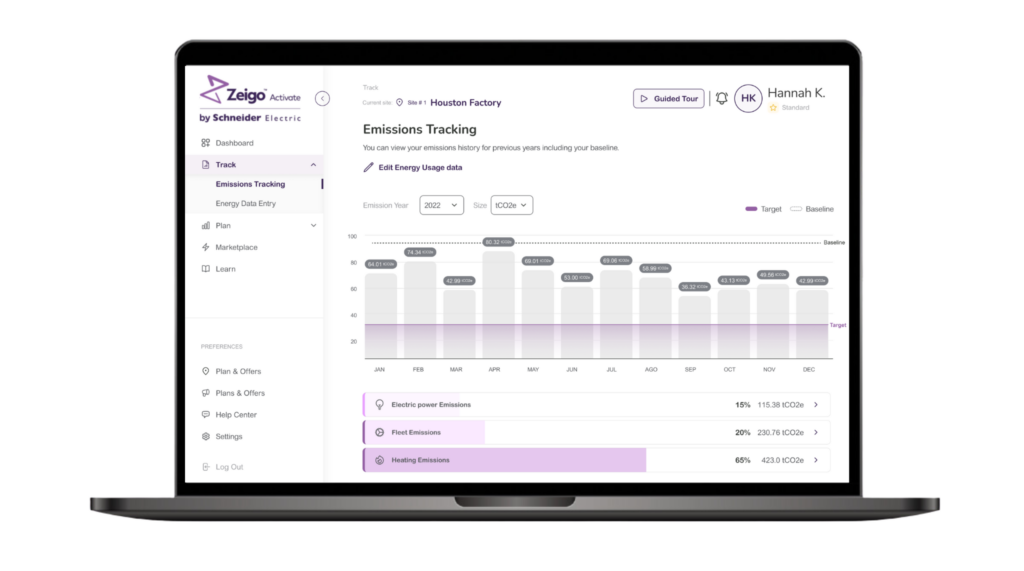Scope 3 Emissions are a critical aspect of reducing carbon emissions and addressing climate change. It requires a collaborative effort between large corporations and their supply chain partners. This post introduces the basics of emissions scopes and how small and medium-sized enterprises (SMEs) play a crucial role in reducing the carbon footprint up and down the value chain.
Measuring greenhouse gas emissions
One of the critical steps to reducing greenhouse gas emissions is measurement. Organizations should start with a baseline, or starting point, then measure improvements and progress over time. Measurement supports goal-setting, budgeting, and reporting. But to measure, we need a scale. The Greenhouse Gas (GHG) Protocol and the Carbon Disclosure Project (CDP) are two leading global frameworks to measure a company’s greenhouse gas footprint. These and other frameworks are ways to categorize the different emissions an organization makes, and emissions in its value chain. These frameworks divide emissions footprints into three “scopes.”

What’s the difference between Scope 1, 2, and 3 emissions?
Scope 1 refers to a company’s direct emissions from what they own or manage. For example, your natural gas combustion for your building’s heating and water are Scope 1 emissions. Scope 2 includes indirect emissions, or those the company purchases. Think grid-supplied electrical power.
When organizations consider reducing emissions, they often start with Scope 1 and 2 because they’re easiest to control. This approach isn’t enough, however, because Scope 3 has the most potential for impact. Scope 3 emissions—the emissions that are represented up and downstream their supply chain—account for up to 75 percent of large companies’ GHG emissions. From business travel to waste management, these indirect emissions are everywhere in a company’s footprint. That’s why Scope 3 emissions represent a huge opportunity to drive impact. As decarbonization efforts accelerate, consumers and investors will increasingly scrutinize the supply chain’s influence on the overall footprint. With up to 75 percent of the footprint at stake, they’ll be looking beyond Scope 1 and Scope 2’s low-hanging fruit sooner rather than later.
Can small and medium enterprises make a difference?
The Science Based Target initiative (SBTi) sets recommendations on a path to greenhouse gas reductions. The SBTi only requires SMEs to set Scope 1 and 2 targets. They define small and medium enterprises (SMEs) as companies with fewer than 500 employees. Unlike larger corporations, SMEs must measure Scope 3 emissions, but do not have to set Scope 3 targets. Don’t let that guidance fool you though. SMEs are critical to decarbonization efforts. Think about it—while SMEs aren’t required to set Scope 3 goals, larger enterprises are. And guess who’s partially responsible for large enterprise’s Scope 3, indirect carbon emissions? You guessed it—their SME vendors downstream. As an SME, your Scope 1 and Scope 2 emissions are key to unlocking powerful net zero progress for enterprise customers upstream looking at you to achieve their Scope 3 reduction targets.
[For more information about SMEs’ critical role in decarbonization and how to get started, download our free e-book, The Hidden Heroes of Climate Action.]
How SMEs can start making an impact
You’ve heard the saying: the best time to plant a tree was 20 years ago—the second best time is now. Whether you’re totally new to decarbonization or have been thinking about it for some time, there’s no better time to start reducing emissions. SMEs represent a whopping 90 percent of worldwide businesses, but often lack the resources a global enterprise has at hand. Leaders, already stretched too thin, may be tempted to throw in the towel before beginning. That’s a mistake, according to a report from Cambridge Institute for Sustainability Leadership. They interviewed 15 SME leaders in decarbonization who identified significant benefits beyond environmental impact including: attracting talent, increased access to capital, greater brand loyalty, and economic resilience. Not to mention that green technology costs continue to improve while many other business costs rise. Still, where does an organization like yours start?
Deloitte suggests starting with a realistic understanding of where your company stands today. That baseline is the perfect vantage point to view the future. Then, make a clear commitment starting with the easiest changes. Many SMEs cite coalitions and partnerships as change drivers integral to sustained success. Another powerful resource is the SME Climate Hub, which provides resources and tools to help SMEs measure, commit, and take action.

SMEs lean on Zeigo Activate to achieve carbon reduction goals
Zeigo Activate, a decarbonization software by global industry leader Schneider Electric, leverages decades of sustainability expertise to help SMEs measure, plan, and execute on decarbonization targets. The software as a service tool (SaaS) empowers SMEs to reduce their impact by helping them:
- Simplify emission tracking
- Set decarbonization targets
- Follow a customized plan to reach goals
- Access an open marketplace of solution providers
Utilizing tools like software applications can help organizations continually optimize and streamline efforts so you stay on target.
Get started on your decarbonization journey with Zeigo. Visit zeigo.com/activate to learn more or contact us to book a demo today.